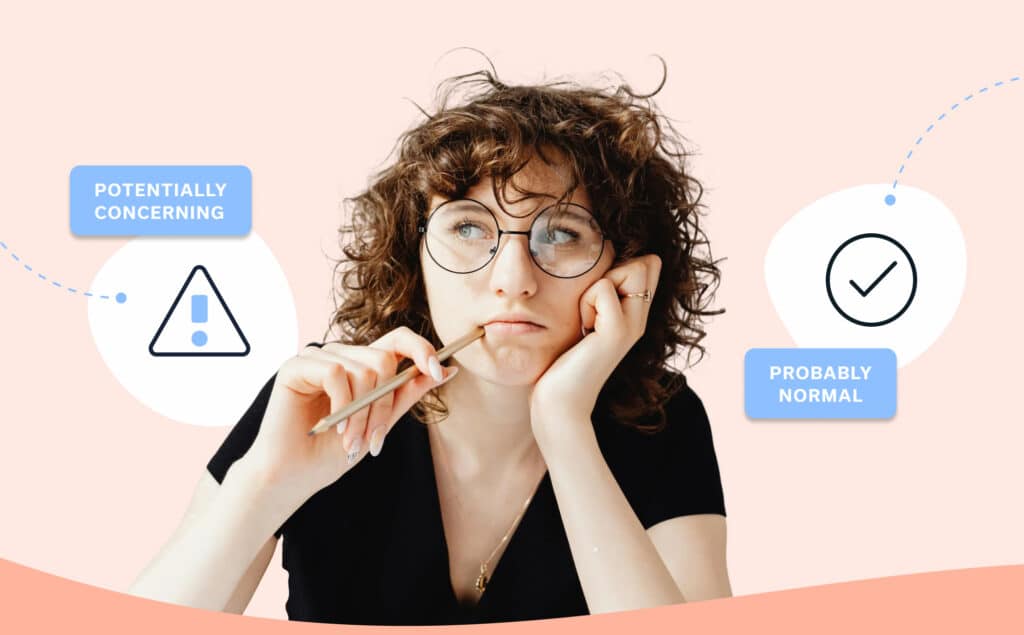Key Takeaway: The demand for GLP-1 drugs is rising sharply, and employers and health plans are seeing it in rising costs. Yet, GI side effects impact GLP-1 adherence and without the proper patient education and support, GLP-1 costs rise uncurbed. Patients need ongoing wraparound support to unlock the health benefits of GLP-1s – and the savings promised to healthcare buyers.
The demand for GLP-1 drugs is rising sharply, as are costs. Prescriptions for GLP-1s have more than quadrupled since 2020, A 2024 KFF Health Poll survey found that as many as one in eight (12%) adults have taken a GLP-1 drug, with as many as 6% are currently using GLP-1 drugs. These medications remain expensive, costing more than $16,000 per patient per year for some patients, and employers, health plans, and patients are feeling it. GLP-1s now account for almost 10% of overall pharmacy costs. Yet, GLP-1 adherence has arisen as a significant issue, largely driven by the impact of GLP-1s on GI symptoms; GI side effects are one of the top barriers to GLP-1 adherence.
While GLP-1s are highly effective and drive profound health impacts, low rates of adherence mean employers and health plans are increasingly stuck with rising GLP-1 costs, but without the intended health outcomes and savings. With adherence rates around 32% per year in commercial populations after a year, it’s no surprise that 96% of employers are concerned with the appropriate use and long-term cost implications of GLP-1s.
Patients need the appropriate ongoing wraparound support to unlock the health benefits of GLP-1s without the adverse impacts, and healthcare buyers need solutions that help them manage costs while ensuring their members and employees have what they need to get and stay healthy.
The Emerging Problems with GLP-1 Use
The University of Chicago School of Medicine calls GLP-1s “effective but complex,” a term that resonates with the clinical team at Oshi. GLP-1s are highly effective at controlling blood sugar and slowing down gastric processes, but they are also highly effective (so to speak) at bringing on side effects like constipation, nausea, and abdominal pain that, if untreated, will impact adherence and, in turn, short and long term results. Most GI practitioners say that GLP-1 side effects are the norm, not the exception – with 40-70% of GLP-1 patients experiencing GI side effects.
Patients taking GLP-1s are at an increased risk for several different chronic and acute conditions. They are:
- 98% more likely to have a psychiatric disorder
- 195% higher risk of depression
- at a 9X higher risk of pancreatitis
- 3.7X more likely to have gastroparesis
- 4X higher risk of developing a bowel obstruction
The combination of a high incidence of side effects, a lack of patient education, an increased risk for both physical and mental health disorders, and the rising demand for GLP-1s has created the “perfect storm” for patients who find themselves experiencing debilitating side effects without the knowledge of how to control them.
As side effects worsen, many patients choose to stop taking their GLP-1 medications to find much-needed relief. They hope to return to feeling normal, which often compounds the problems. GLP-1s require ongoing maintenance to be effective. Patients who stop taking their GLP-1 medication often regain weight and suffer from increased complications from uncontrolled diabetes and obesity, including increased risk of heart attack or stroke, plus an increased risk of metabolic syndromes like fatty liver disease. For many patients using GLP-1 drugs, adherence is crucial to their ongoing health.
In addition to impacting workplace outcomes such as absenteeism, patients are increasingly seeking additional care to cope with their symptoms.
When GI doctors aren’t available, patients seek emergent options. 70% of GLP-1 related ER visits are due to GI symptoms – and 15% of those require hospitalization.
The rising costs associated with these care escalations coupled with the rising costs of GLP-1s themselves are unsustainable. Yet current GLP-1 healthcare strategies are not built to address this.
The Key to “Complex yet Effective” GLP-1 Care
Oshi’s virtual clinic is uniquely positioned to support the “perfect storm” faced by patients taking GLP-1s. Oshi’s team understands what patients struggling with GI symptoms, including those taking GLP-1s, need:
- Integrated multidisciplinary care: Patients should receive coordinated care addressing each of their needs, with support from GI providers for diagnosis and medication, registered dietitians to pair GLP-1s with the right diet for sustainable improvement, behavioral health specialists to ease the anxiety around GLP-1 side effects for adherence, and care coordinators to work with their existing GLP-1 provider. Patients need a meaningful time investment from their care team to drive big-picture changes leading to better GI health.
- Quick access to care: GI symptoms can be debilitating, so those taking GLP-1s need quick access to clinical support within days, not months, and the ability to call a provider for support day or night if symptoms flare.
- Ongoing clinical support: Patients need regular check-ins with their clinical team, so that they can manage emerging symptoms, monitor titration of medications, and understand the dietary and lifestyle changes needed to control symptoms.
- Patient education: Patients need support as they work to understand their medical, dietary, and lifestyle choices. They need education on side effects, symptoms, comorbidities, medication costs, and potential side effects, to fill in the gaps between doctor’s appointments so they can make wise healthcare decisions and manage their symptoms, diet, and lifestyle.
This approach has allowed hundreds of patients to stay on their medications and reap the health benefits of taking GLP-1 drugs, leading to the dual benefit of lower costs for employers and health plans, and a higher quality of life for patients.
An Approach with Real Impact
Recently, Oshi analyzed the subset of its patients on GLP-1s to uncover the impact of providing multidisciplinary support to GLP-1 patients.
Our integrated approach has led to more than 96% of Oshi patients on GLP-1s reporting improvement and control over their symptoms within six months of starting care, which led to better reported quality of life and increased medication adherence.
By finding lasting relief, 98% of these patients reported being satisfied with Oshi’s care.
Oshi has helped me resolved a condition that bothered me for years. I did tell doctors in the past about my issue and they just prescribed a pill without any insight as to what was the underlying problem. Oshi did it all and I’m very thankful for the peace of mind it brings me not to be suffering anymore.
— Oshi GLP-1 Patient
And cost savings quickly followed.
We saw average cost savings of $6,396 per GLP-1 patient, driven by decreases in avoidable imaging (93%) and high-cost diagnostic procedures (90%)
Combined with an average reduction of 64% in ER visits across Oshi’s full patient population, the savings for buyers were substantial.
With strategic, integrated care, patients can get the benefits of using GLP-1 drugs without the debilitating side effects, and employers and health plans can manage the costs associated with GLP-1s without impacting the health of the people they serve.
If you want to read more about Oshi’s approach and impact on GLP-1 patients, download our full case study here.







